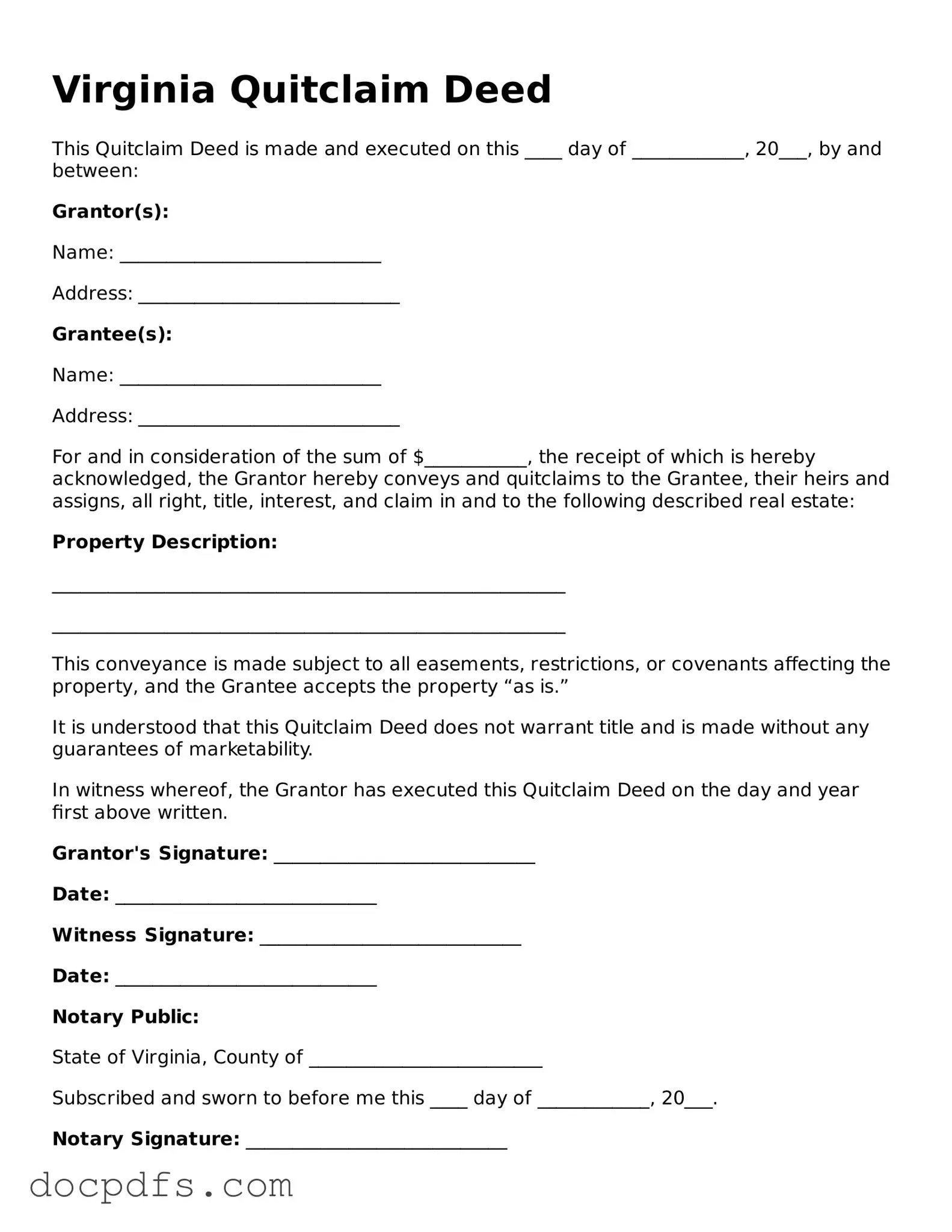The Virginia Quitclaim Deed form serves as a crucial legal instrument in real estate transactions, particularly when transferring property ownership without guaranteeing the title's validity. This document allows one party, known as the grantor, to convey their interest in a property to another party, referred to as the grantee. Unlike other types of deeds, a quitclaim deed does not ensure that the grantor holds a clear title; instead, it merely transfers whatever interest the grantor may have, if any. This makes it a popular choice for situations such as transfers between family members, divorce settlements, or clearing up title issues. The form must be completed with specific information, including the names of both parties, a legal description of the property, and the date of the transfer. Additionally, it requires the signature of the grantor, and while notarization is not mandatory, it is highly recommended to ensure the deed's acceptance in the event of future disputes. Understanding the implications of using a quitclaim deed is vital, as it can have significant consequences for both the grantor and grantee. Properly executing this form can facilitate a smooth transfer of property, but it also carries risks that should not be overlooked.
